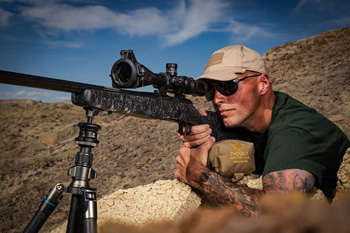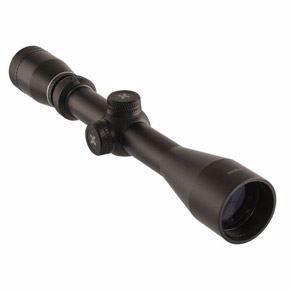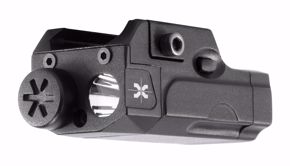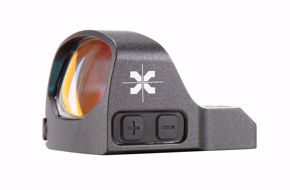
Whew, it is hot out there this Summer! Well, at least it is in parts of the country. In the bright, sunny south, and a few other places, we have to contend with a factor called the heat index. The heat index is sort of like a handicap in golf. The heat index is a function of the measured temperature and the relative humidity rate. It seldom gets to 115 degrees in the south, but the desert southwest is no stranger to such measured heat. However, you’ll rarely see the humidity above 40% in Phoenix. In essence, 115 degrees in Phoenix feels like 115 degrees.
Contrast this to a typical southern city that sees the mercury top out at 105 degrees on the hottest days. The typical southern city won’t have a relative humidity below 40% at any point in the year. In the southern summer you can expect between 50 and 80% humidity on the regular. This handicaps the heat in the south to a heat index rating that will often equate those high desert southwest temperatures. For example, a 95 degree day with 60% humidity will have a heat index value of 113 degrees.
If you ever traveled to the south and heard the phrase, “It’s not the heat, it’s the humidity” you know what I am talking about. Humidity, especially on a hot day, is oppressive. A person who is outside for only a few moments begins to feel sticky. Profuse sweaters, like myself, will have sweat beading up on our skin within minutes standing in the shade on a day like this. Breathing feels difficult in this weather. The air is saturated with moisture so much that you can see it in the right conditions.
No doubt, 115 degrees is HOT no matter where you are, but 95 and humid can feel just as bad, at least to me. But we like to shoot guns around here, right? Yes we do! So how does an area's weather conditions affect the velocity of a projectile?
Last year I picked up a Savage 110 in .308 Winchester and promptly zeroed in my Axeon 4-16X50 Scope on it. Happy with my results, I went home, cleaned the rifle and locked it away in the safe. The urge to shoot hit me again several months later. I drove out to the same range and set my freshly painted steel target up at the same distance. But when I started sending some rounds down range, the group was in a different part of the target than the one I had just painted over. The difference was not huge but the group had moved. I knew I had zeroed the rifle in only a few months ago, what had changed?
The Weather
The rifle had been zeroed in under one set of conditions and shot again under another. This set me to thinking about what factor in the weather makes the biggest difference when it comes to shooting. Is it the heat, the humidity, or barometric pressure? What about altitude? How do all of these factors affect what your bullet is doing downrange?
What those two markedly different days taught me about shooting is that at least one of these factors has a noteworthy difference on velocity– I just didn’t have the data to explain it correctly.
To demonstrate the effects of heat, humidity, and barometric pressure, I plugged in some ballistic data from a modern sporting rifle chambered in 5.56 Nato. I took initial ballistics and input that information into the ballistics calculator on the Shooter’s Calculator website. This easy to use calculator allows the user to change all manner of variables used to create a ballistic trajectory profile for a given caliber round at a particular weight, ballistic coefficient, velocity, scope height, and, yes, even atmospheric conditions and altitude. Like any calculator, you must put good data into it in order to get good data out of it.
Unless you have a chronograph to capture velocity out of the muzzle, you are somewhat limited in stating an accurate velocity. Most ammo is sold with some ballistic data printed on the box. Chances are that the FPS at the muzzle was taken with a longer barrel than your rifle has. This is a common practice in the industry. First, it allows the various ammo manufacturers to be consistent in how one ammo of a certain caliber compares to another manufacturer’s version of that same load. Secondly, it also allows that box of ammo to be presented in its best light– most likely the maximum possible velocity for the bullet weight and powder charge in that load.
There has been a few articles written where the tester performed an “inch-by-inch” barrel length test. Reading one of those articles can be enlightening if you have a shorter barreled rifle than what the ammo manufacturer tested. For this article I am using my 20 inch barreled AR15 chambered in 5.56 NATO. Hornady 5.56mm 55 grain FMJ is rated for 3,240 FPS when fired from a 20 inch barrel.
Factor This In
However, what you really need to know are some other factors. What was the weather like? What was the altitude where the rifle was shot? Hornady does in fact provide this data.It is a standard for their test protocols.The air temperature is 74 degrees, the barometric pressure is 29.90 inches of mercury, and the altitude is 1,800 feet above sea level.
Below is a chart that compares some changes in outside conditions and their effects noted downrange at 300 yards.
|
Muzzle Velocity |
Temp |
Humidity |
Altitude |
Impact 300Y (100 Yard Zero) |
300Y FPS |
|
20” Barrel |
Spread (0.45”) |
Spread(101) |
|||
|
3240 |
80 |
20 |
1000 |
-7.40 |
2531 |
|
3240 |
80 |
60 |
1000 |
–7.38 |
2535 |
|
3240 |
80 |
20 |
3000 |
-7.22 |
2578 |
|
3240 |
40 |
20 |
1000 |
-7.67 |
2477 |
|
3240 |
40 |
60 |
1000 |
-7.66 |
2478 |
|
3240 |
40 |
20 |
3000 |
-7.42 |
2528 |
The darker blue shaded rows show the best ballistic performance for the 5.56 round given the different scenarios where temperature, humidity and altitude are variables. The orange tinted row indicates the poorest performance via those parameters. It should be noted that a 5.56 round fired from a 20 inch barrel is moving about 17% faster than a .308 Winchester round (2,700 FPS) when fired out of a 24” barrel.
Results: Heat and Altitude Matter
What we can see from this chart is that humidity has a negligible effect on velocity, but temperature and altitude have a much greater effect on ballistic performance. The swing for this rifle between the highest and lowest velocity is 101 FPS. Keep in mind these are not extreme limits on the variables. In any of the scenarios the temperature can be hotter or colder, the humidity could be higher or lower, and the altitude could be much higher or lower.
A 40 degree swing in temperature at 20% humidity at 1000 feet of elevation leads to a swing of velocity of 54 FPS. Changing altitude for this rifle and leaving the temp and humidity alone, we get a 47 FPS change.
Chances are if you are hunting the same species during the same season, you will have fairly consistent conditions year to year and you never notice the effect of temperature or altitude on your shot placement. Where these factors will become germane is for shooters who routinely shoot at longer ranges. As we can see from the chart above, at 300 yards, the 55 grain ball is only changing its impact by 0.45 inches when the temperature and elevation are higher versus a colder day at a lower altitude. Most shooters won’t need to make a correction to adjust for this. However, when the range is extended, larger spreads in drop and velocity appear. Check out what happens to the drop and velocity at 500 yards on the chart below.
|
Muzzle Velocity |
Temp |
Humidity |
Barametric Pressure |
Altitude |
Impact 500Y (100 Yard Zero) |
500Y FPS |
|
3240 |
80 |
20 |
29.9 |
1000 |
-36.78 |
2115 |
|
3240 |
80 |
60 |
29.9 |
1000 |
-36.68 |
2121 |
|
3240 |
80 |
20 |
29.9 |
3000 |
–35.57 |
2187 |
|
3240 |
40 |
20 |
29.9 |
1000 |
-38.32 |
2035 |
|
3240 |
40 |
60 |
29.9 |
1000 |
-38.28 |
2038 |
|
3240 |
40 |
20 |
29.9 |
3000 |
-36.87 |
2111 |
Just changing the temperature can move the bullet 1.54 inches at the same altitude. At some point factors that don’t have much effect at shorter ranges must be compounded into the equation. I am not a long distance shooting instructor and I don’t pretend to be one. However, this data notwithstanding, for practical shooting, changes in any of these variables are really only significant when looking at extremes. Even looking back at the situation that made me think about this question, if I had been hunting, I would have had a successful hunt whether it was 40 degrees or 80 degrees. The difference between the two groups was slightly less than an inch. Had I been hunting at 600-700 yards, it would have been a different story. The good news is I don’t have to worry about hunting at that distance since I believe it is unethical and my home state really doesn’t offer opportunities to hunt at such distances.
The people who need to worry about the effects of various factors on their accuracy are not reading blog entries on it. They are at the range sending it. With that said, it’s about quitting time so I’m going to head out for home and maybe after checking in with the family I’ll grab my rifle and head out to the range for some trigger time.



